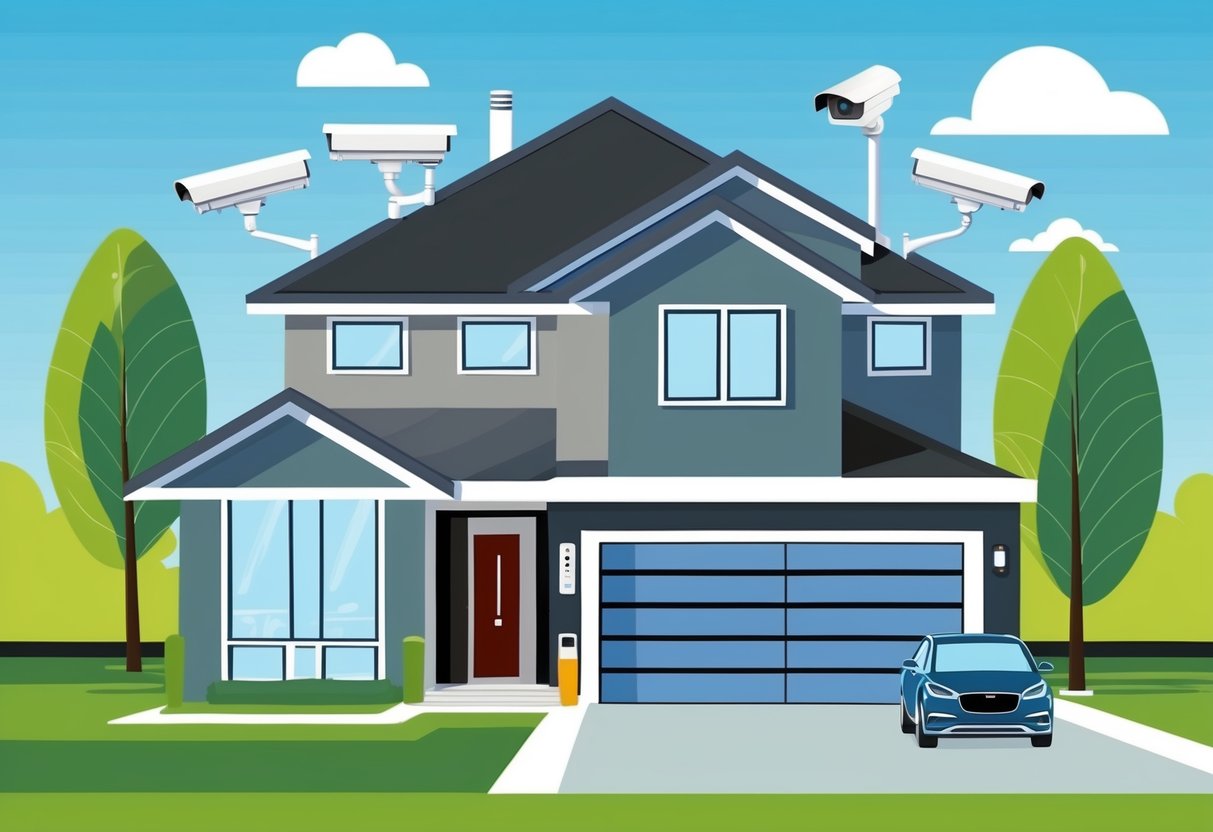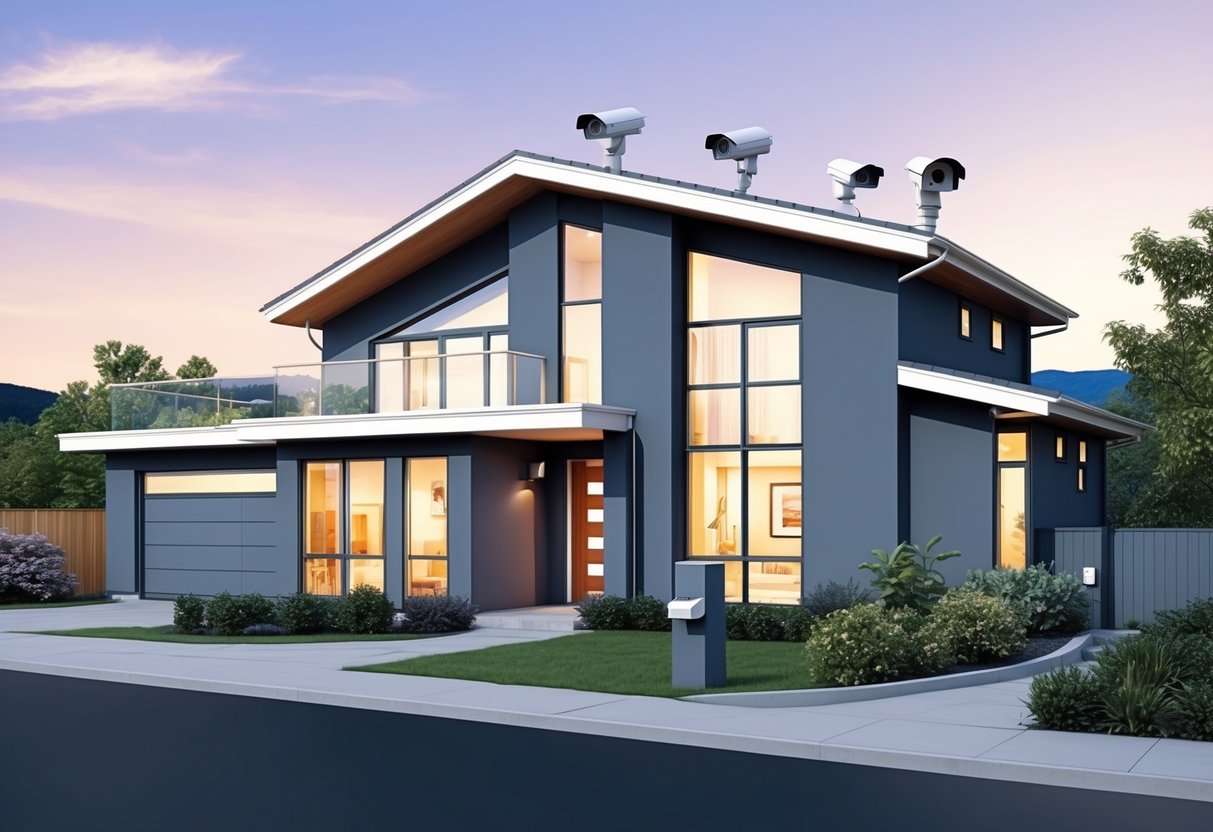
Home Security Cameras: Features and Innovations

Security cameras are at the core of modern home security systems, offering real-time monitoring, motion detection, and remote access. Today’s options provide increased image quality, better storage choices, and smarter integrations that strengthen both prevention and response.
Indoor Security Solutions
Indoor security cameras are designed to provide peace of mind by letting homeowners monitor the inside of their properties remotely. Many feature 1080p or higher resolution, two-way audio, and AI-powered motion detection to reduce false alerts.
Key features include:
- Wide field of view (often more than 120°)
- Mobile app integration for live streaming and instant alerts
Compatibility with smart home platforms such as Alexa and Google Assistant is common. Cloud storage is another vital aspect, enabling secure video footage backup.
Some models include local storage options as a backup, giving users flexibility and privacy. Many leading brands, like Ring and SimpliSafe, provide easy do-it-yourself installation.
For top-rated systems, options like abode and Ring Alarm continue to be highly rated.
Outdoor Surveillance and Night Vision
Outdoor surveillance cameras must handle harsh weather conditions and offer robust night vision for 24/7 protection. Most outdoor models provide features like IP65 or higher weatherproofing, which ensures reliable operation through rain, snow, and heat.
Night vision is a key innovation, commonly using infrared LEDs or color night vision sensors for clear images even in complete darkness. Enhanced motion zones and smart detection allow for precise notifications, so only relevant activity triggers alerts.
For broader coverage, users often select cameras with pan, tilt, and zoom capabilities. Some advanced cameras incorporate spotlights or sirens, deterring unwanted visitors before they approach.
Video captured outdoors often uploads seamlessly to cloud storage for secure, off-site backup, and easy retrieval in case footage is needed as evidence.
Video Doorbells and Video Verification
Video doorbells combine surveillance, visitor management, and two-way communication in a compact device at the front door. Modern doorbells feature HD video, smart activity zones, and integration with mobile apps for real-time alerts and footage review.
Video verification is a growing trend that connects doorbell or camera footage to professional monitoring centers. When an alarm is triggered, the monitoring team can immediately review video to determine if the threat is genuine.
This results in faster and more accurate emergency response, as authorities receive verified alerts instead of potential false alarms. Popular models like those from Ring and Google Nest provide cloud storage, customizable motion alerts, and work well with broader home security systems.
The ability to review, download, or share clips strengthens both security and convenience for homeowners.
Smart Home Integration and Automation
Smart home security systems not only protect property, but also connect seamlessly with everyday smart devices to simplify routines. This combination of security and convenience gives homeowners real-time insights, remote control, and more tailored security solutions.
Amazon Alexa and Google Assistant Compatibility
Many leading security systems can be integrated with Amazon Alexa and Google Assistant, allowing users to manage devices through simple voice commands. For instance, homeowners can arm or disarm their system, check camera feeds, or control lights just by speaking to their preferred voice assistant.
The integration extends to routines and automations. For example, Alexa can trigger smart lights, locks, and alarm arming simultaneously when a user says, “Alexa, goodnight.”
Google Assistant works similarly, offering compatibility with a wide range of third-party smart devices and security brands. This hands-free control can benefit those with busy lifestyles or mobility challenges.
Setup typically involves linking the security system’s app with the voice assistant’s app. The process is usually user-friendly, supporting both Android and iOS devices.
If the system is compatible, sensors or events can also be set as triggers for automated routines, improving both convenience and home protection.
Remote Access and Control
With remote access, users can monitor and control their home security system via smartphone apps. Features often include real-time video feeds from connected cameras, instant notifications for sensor activity, and the ability to lock or unlock doors from anywhere.
Remote control allows users to adjust settings, disarm alarms, or let in trusted visitors without being physically present. This flexible approach suits frequent travelers and those managing multiple properties.
Systems like SimpliSafe and Ring Alarm provide secure, encrypted connections and two-factor authentication for added protection. Key benefits include on-demand status checks and remote activation or deactivation of devices like lights, thermostats, and garage doors.
For many, remote access and full smart device compatibility are deciding factors when choosing a modern home automation security system.